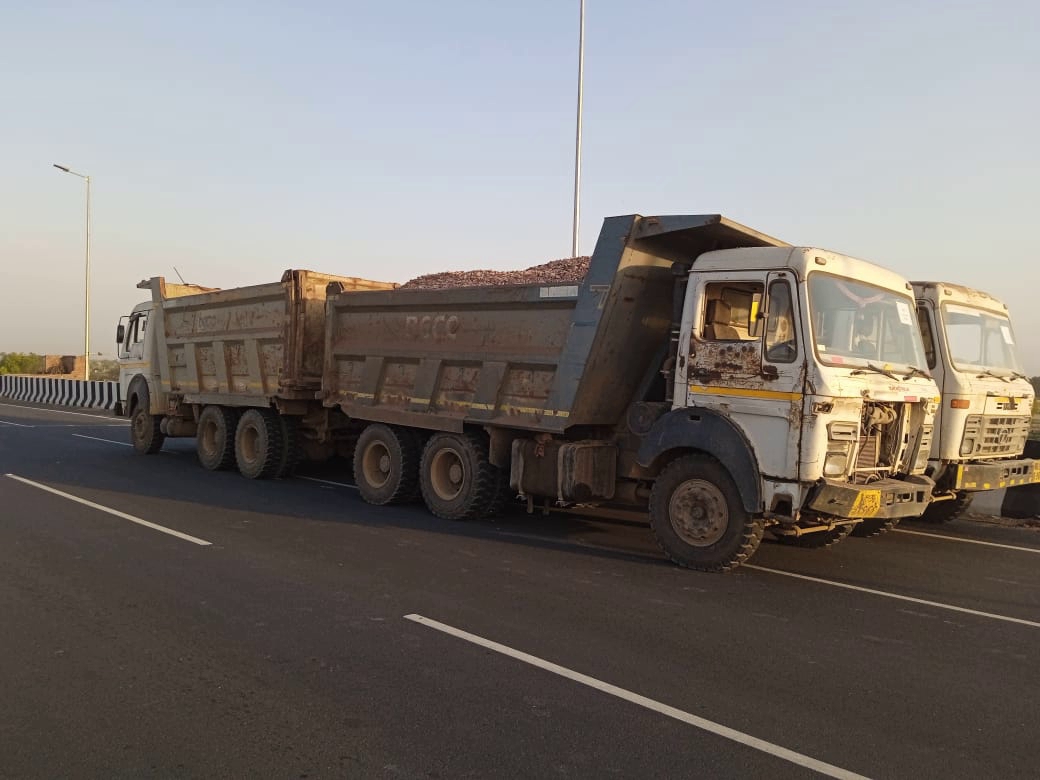- Purpose
Purpose of this test is too serve the behavior of the bridge by the application of design live load or load slightly exceeding design live load over a long period of 24 hours and elastic performance of bridge deck on removal of test load. It is used to assess the condition and safety of bridge. The load testing is used to check whether maximum deflection and percentage recovery are within permissible limits or not.
- Relevant code
Bridge Load Test shall be conducted as per guideline provided in IRC: SP: 51-2015.
3. Scope & Provided by Sponsor
Scope of work includes conducting the Span Load Test.
a) Span Length – As per drawing
b) Test Span – As per drawing
c) Width of Carriage way – As per drawing
d)Test Load – As per drawing
Method of Loading – By filling suitable material in truck.
e) Location of Dial Gauge At L/4, L/2 and 3L/4 of the bottom side of girder.
(where L is the c/c distance between the bearing) as indicated in or as specified in Drawing
f) Dial Gauge to be installed for Test Span– 3 nos. Dial Gauge on one girder as mentioned in drawing.
g) Nos. of Dial Gauge to be installed for Bearings settlement – 2 nos. or as mentioned in drawing.
4. Test Set-up for Span Load Test
a. Deck shall be cleaned properly; white wash shall be applied at the critical section on Girders. Deck shall be marked for the loading area as per drawing.
b. Trucks loaded with suitable material like aggregate, sand, cement bags etc.
c. Deflection of girder shall be measured by Dial Gauge of 0.1 mm least count which detect the Dial Gauge which are fixed on bottom side of girder.
d. Wherever Dial Gauge cannot be fixed on bottom side of girder due to water flow under bridge. Then total station and Dial Gauge should be used on top of deck slab of bridge. Point of Dial Gauge should be marked on top of deck slab at distance of L/4, L/2 and 3L/4 or distance given in drawing according to alignment of girder.
5.PROCEDURE OF LOAD TESTING
1) The test will be carried out as per IRC SP 51 -2015 Instruments assembled at desired location such as, Dial Gauge, Strain Gauges & Digital Thermometer
2) Visual inspection of bridge is done. In Visual Inspection, Bearing and expansion joints will be checked. Both must be in their functional and working condition. The traffic will be closed for further testing and whitewash is applied to the superstructure for monitoring of cracks.
3) Dial Gauges will be placed on magnetic stands. Dial Gauges will be placed firm on scaffolding platforms with steel plates, so that magnetic stands are firmly located. Dial gauges were mounted just by touching the soffit of structure.
4) Glass plate of size 50x50x5 mm shall be fixed to structure at location of Dial Gauges for positioning.
5) Before loading the precautions should be taken.
a) All staging provided shall be stable and safe.
b) Staging for instruments and observers shall be independent.
c) Staging for instruments shall be rigid.
6) As per IRC SP 51, Loading Operation Stages from 50%, 75%, 90%, 100% of test load in 4 stages, which shall be completed in 4 hrs. At the starting of Bridge load test 50 % of load on bridge is taken, out of total 50% then 75% then 90% & 100% . We had to increment the load at the interval of every 1 hour during this the deflection will be recorded at each stage of loading.
7) After completing loading, we had to keep it retained for 24 hrs and observe.
8) After 24 hours, Structure shall be unloaded at same stage of loading i.e. 100% , 90% , 75% , 50% & 0%. But unloading shall be done in same way of loading , load shall be removed at 1 hour of interval from 100% to 90% to 75% to 50% to 0% as well as deflection is rewarded at each stage.
9) Measurements will be recorded at every hour of loading and unloading.
10) Data will be collected by visual observation before and after loading and there will be interpretation of results
- OBSERVATION
The following observation shall be made before/during/after testing
i) Deflection at critical section
ii) Appearance of crack and their development, length and location
iii) Deformation of bearing
iv) Ambient temperature and relative temperature of the body in the structure
- Temperature Measurement
Temperature of any component like pier, abutment wall of the bridge will be monitored at every one hour or as per drawing. For structure temperature, drill a hole and put digital thermometer in hole at any one point. Also environmental temperature should be recorded. The measurement will be taken by the digital thermometer. Reading of Dial Gauge point at every one hour or as per drawing should be note down for 24 hours. The reading of temperature will be used in temperature correction factor.

